How to Identify a Great Horned Owl
Updated: Jul. 10, 2024
If you hear owl sounds in your neighborhood, it’s likely a great horned owl. Learn about their size, wingspan, nests, diet and more.
On This Page
Great Horned Owl Identification
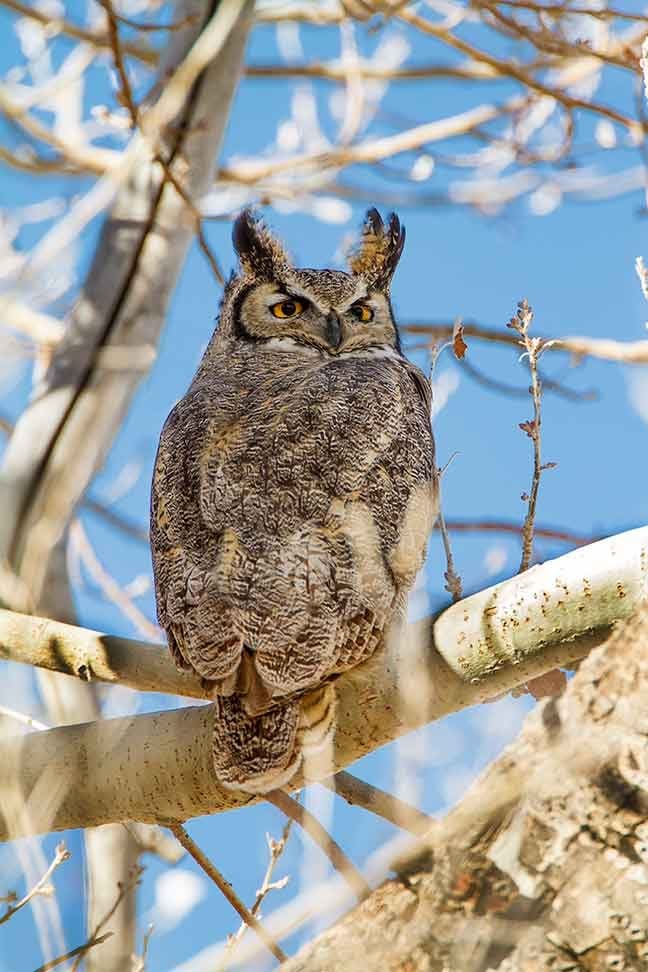
The great horned owl is a big bird, one of the largest owl species in North America, measuring around 2 feet long, and weighing around 3 pounds with a wingspan of 4½ feet! The bird’s anatomy is adapted to its habitat and behavior. It has a sharp beak for eating meat, talons for gripping prey and fringed wing feathers for silent flight.
You won’t want to miss these outstanding pictures of owls.
What Do Great Horned Owls Eat?
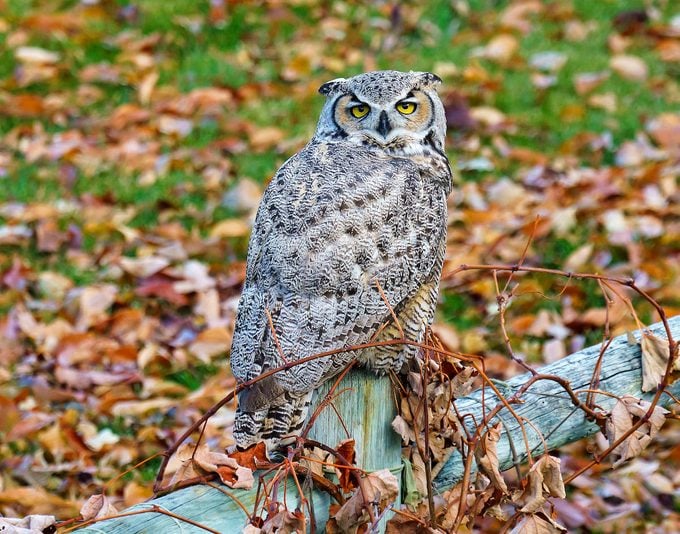
Their favorite food? Skunks! But their full menu is a long one, including crows and other birds, frogs, shrews, bats, rabbits and other small mammals. But overall they aren’t too picky about what they eat. From scorpions to mice, a great horned owl’s diet is expansive.
One thing that makes great horned owls skilled nocturnal hunters is their hearing capability. The owl’s facial disk (the collection of feathers around the eyes) works like a satellite dish, trapping the sound and forcing it toward the ear canal. Its ears are on either side of the head, with one higher than the other to help the owl zero in on the location of its prey.
Why do crows chase hawks and owls?
Do Great Horned Owls Eat Birds?

Birding experts Kenn and Kimberly Kaufman say, “There’s no need to be too concerned about other birds. These big owls capture a wide variety of prey, from insects and snakes to groundhogs. On average, birds make up less than 10% of their diet.
Even if you hear them often, the owls are probably hunting over a large area, up to a square mile or more, not concentrating on your yard. The best protection for smaller birds is to provide plenty of dense cover, such as native shrubs and trees, where they can sleep securely at night when the owls are hunting.”
Meet the northern saw-whet owls: the cutest owls.
Great Horned Owl Sounds
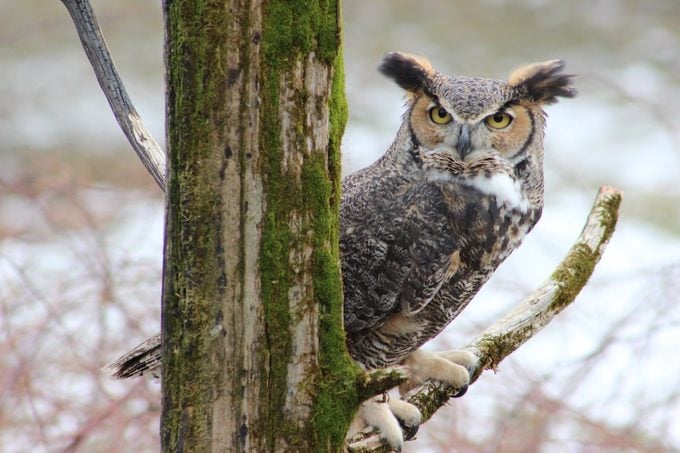
If you ask someone what noise owls make, expect some variation of hoos or hoots. The great horned owl makes these soft, deep sounds that many people associate with owls. The recognizable hoo, hoo-hoo, hoo … hoooh notes ring out across North America. They’re most vocal in winter, so bundle up and step outside for a listen.
Great horneds are early nesters; listen for their characteristic hoots on cold, crisp nights, and especially before breeding season. A paired male and female perform a courtship duet. They utter a low series of five to eight hoots; the female’s notes are higher pitched. They also bow to each other and rub their bills together.
Female great horned owls are bigger than males, but males have larger voice boxes. When you hear them calling back and forth, try to pick up the male’s deeper voice and the female’s corresponding higher pitched hoots.
Don’t get tripped up if you think you hear this owl during the day—it might actually be a mourning dove.
Bird sounds courtesy of the Cornell Lab of Ornithology
Eastern vs western screech-owl: what’s the difference?
Do Great Horned Owls Mate for Life?
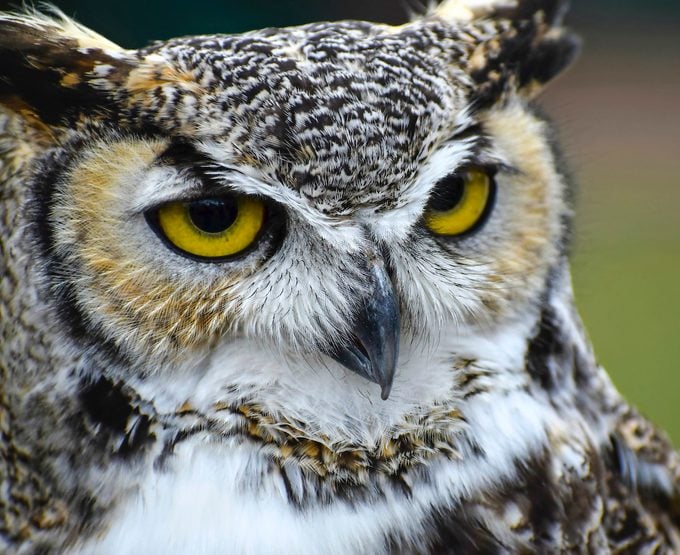
Great horned owl pairs are monogamous and may stay together for five years or more. Some researchers think they stick by each other’s sides for life. Males assist throughout the entire nesting season and will bring food to the nest for the female and young.
Not all owls nest in trees! Learn fascinating burrowing owl facts.
Great Horned Owl Nest
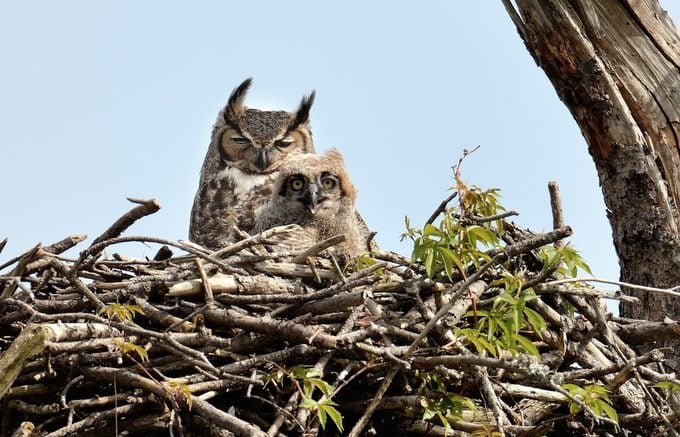
While fall and winter might seem like improbable times to nest, the great horned owl is no ordinary bird.
“When the young are hatching, there has to be an abundant prey source to feed them, and great horned owls have it timed just right,” says Jim Herkert, former executive director of the Illinois Audubon Society. In late winter and early spring, plenty of mammals and other prey are available for the parents to bring to their recently hatched young.
They raise their young in abandoned squirrel or hawk nests made of sticks, or in tree cavities. Females lay eggs in late November in Florida, late December in the Carolinas, and late January farther north.
It is still winter in the northern states when great horned owls start incubating their eggs. It’s essential that these owls get an early start on nesting because the species is slow to hatch and fledge. It is remarkable to think of the owls sitting on eggs as snow piles up during frigid nights.
Get to know snowy owls and where to find them.
Baby and Juvenile Great Horned Owls
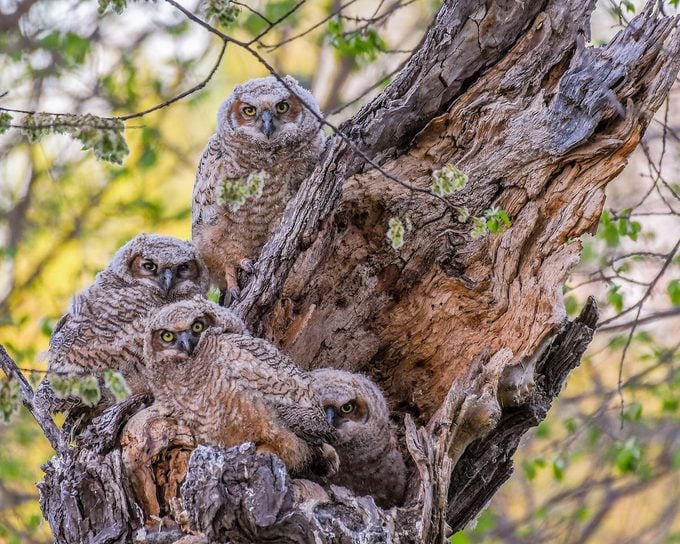
Growing up takes a long time for young great horned owls. The young hatch in about 30 days. The male brings food to his partner, who tears it into bite-sized pieces and feeds it to the young.
In three weeks, their offspring begin peering out of the nest, showing off the white down on their heads. They stay in the nest for five or six weeks after hatching. They climb out of the nest onto nearby tree branches, and sometimes they fall to the ground and clamber or flutter back up to safety.
By seven weeks, fledgling great horned owls are fully feathered enough to make short flights. But adults continue to bring them food, responding to an eerie begging call that sounds like a human scream. Fledged owls typically stay with their parents for most of the summer.
Discover fascinating facts about owls you should know.
How to Attract Great Horned Owls
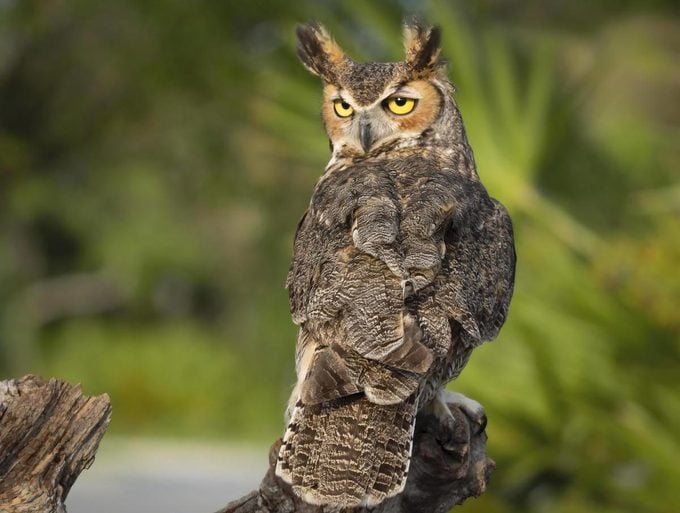
Great horned owl numbers are declining, according to the Cornell Lab of Ornithology. To help, erect a wooden nesting platform with shallow sides in a live tree. Place large sticks and grass inside to mimic a hawk’s or crow’s nest.
Once you’ve attracted a pair of great horned owls, listen for hoots in the autumn night. Just make sure you watch from a distance so you don’t disturb them.
Get more tips on how to attract owls to nest in your backyard.
Habitat and Range
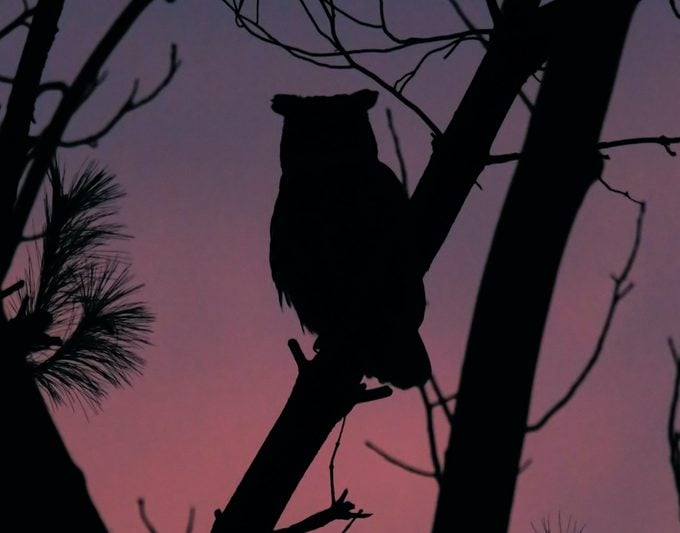
If there’s an owl in your neighborhood, there’s a good chance it’s a great horned owl. These birds of prey make themselves at home in a diverse range of habitats, including deserts, wetlands and forests. Overall, they prefer woods near open areas and fields, but they are found across North America, even in cities.
Next, find out if owl sightings have special meaning.
About the Expert
Jim Herkert is the former executive director of the Illinois Audubon Society. Jim previously served as director of the office of resource conservation for the Illinois Department of Natural Resources.
Sources
- Illinois Audubon Society
- Project NestWatch
- All About Birds – great horned owl






















